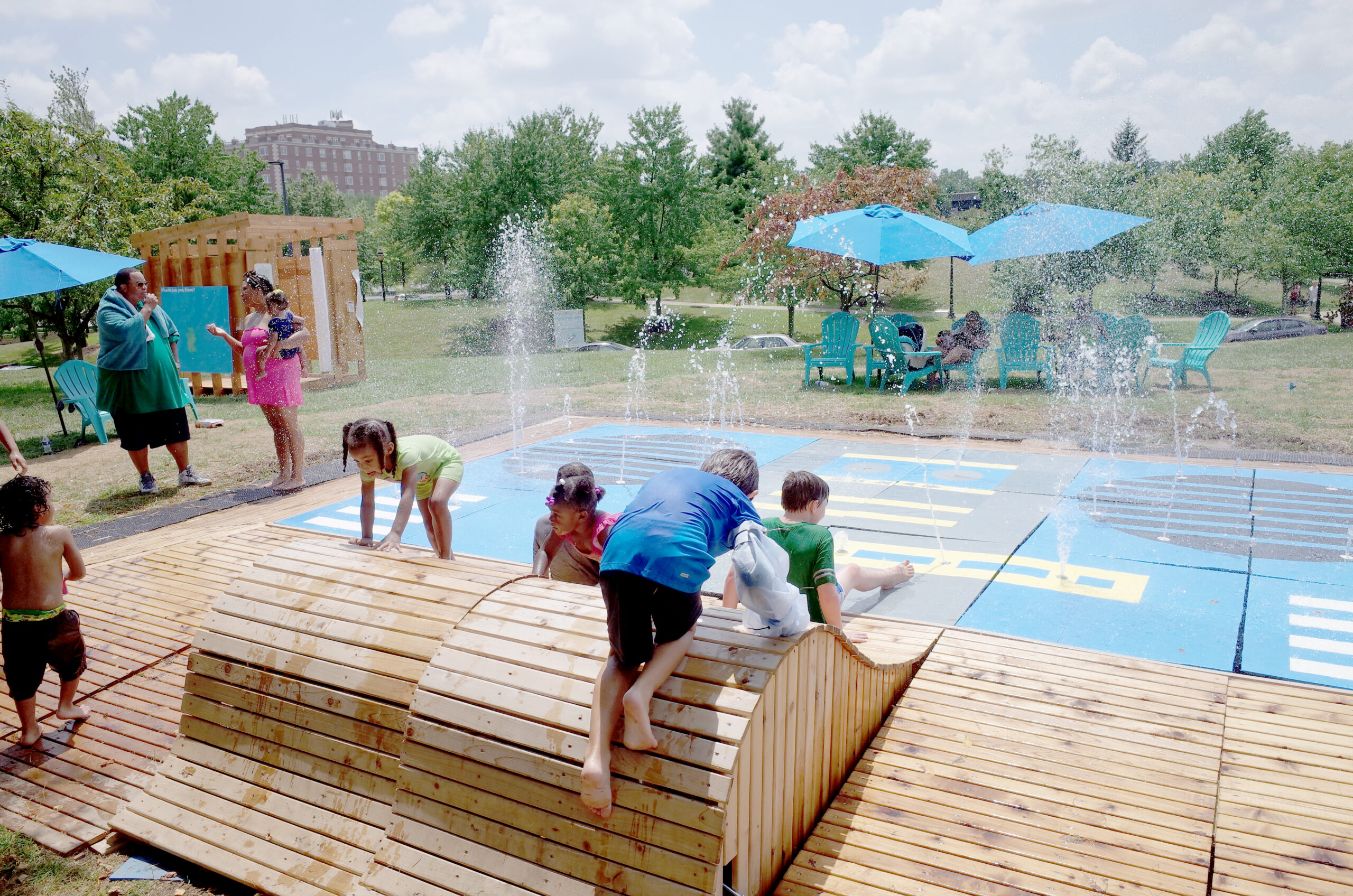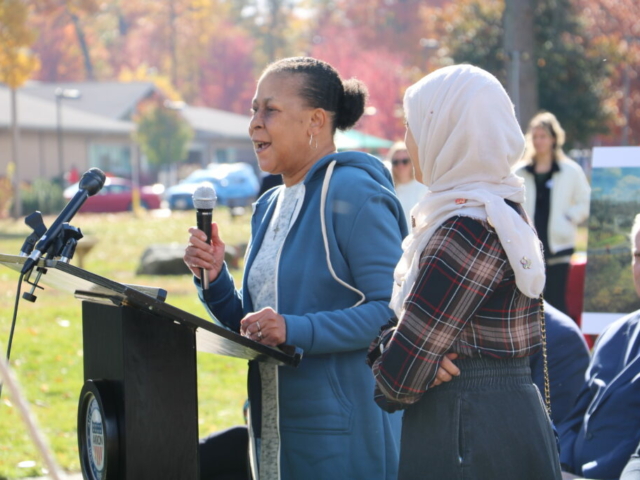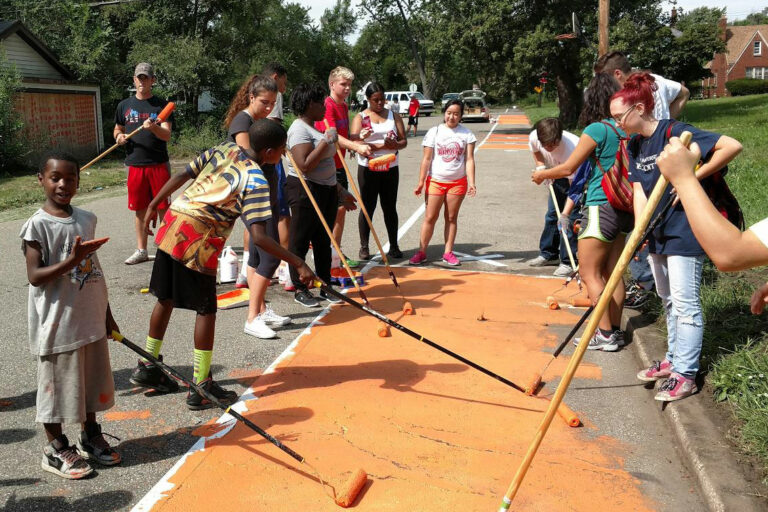Practitioners assume a representative group of people will participate in the engagement process, but research shows that public meeting participants are much more likely to be unhappy or distrusting.
PRACTICE CHANGE:
Reach a diverse, representative range of people by going where they congregate—e.g. porches, recreation areas, coffee shops or existing local gatherings.
In 2006, the Minneapolis Public Schools District hired The Urban Design Lab, led by Paul Bauknight, to engage the community in determining the future use of 12 recently closed school buildings. Recognizing the limits of traditional community meetings, which often only reach a subset of the target population, the team spent over a year hosting meetings and events in neighborhoods across the city, focusing on reaching a diverse audience and engaging people who may not typically participate in public processes. They met people in grocery stores, churches and parks, at neighborhood events, and even on front porches. Meeting people where they felt most comfortable increased the amount of feedback the team received while also shifting the power dynamic and allowing for more open and honest communication.
The result was the most robust community engagement initiative the District had undergone to that point. The team’s decision to meet in community-based locations where people were more likely to be available and receptive was critical, particularly in a community where distrust and tension ran high. Despite the community’s disappointment around closing the schools, the team received praise for the engagement process, with many community members expressing increased trust in the people and the process over time.
PRACTICE CHANGE:
Identify supporters in advance and assist them in amplifying their message both during meetings and through other channels such as op-eds and media interviews.
In Akron, Ohio, the Ohio & Erie Canalway Coalition takes steps to ensure resident voices are at the forefront. Instead of being, in resident Starleen Saulsberry’s words “a bunch of professionals coming in to tell us what they are going to do,” residents were invited to be partners in the work. With a history of neighborhood disinvestment, people were long skeptical of any meaningful change. Resident Grace Hudson noted “this community was used to having promises made and not kept.”
Through the multi-year commitment and demonstrated progress that responded to resident concerns and ideas, residents like Starleen and Grace are more involved than ever through steering committees and neighborhood programs. Residents are frequently major speakers at events, such as groundbreakings or ribbon cuttings, and featured by the local press.
By ensuring there is always a local resident with a critical speaking role, the team intentionally uplifts and amplifies the voices of residents who might not otherwise have a platform to share their opinions or be heard.
PRACTICE CHANGE:
Use active engagement practices such as space observation, intercept surveys and interviews to better understand public sentiment.
In Lexington, Kentucky, the City reimagined its approach to engagement after neighborhood residents rejected plans for a sprayground that was planned without community involvement. When the team returned to the neighborhood, they prioritized relationships, public life and trust by piloting smaller improvements and getting the community, including local kids, meaningfully involved in a collaborative design process.
A temporary splash pad was installed in a nearby park and iterated through two seasons. During this pilot phase, the team collected data demonstrating demand and interest, established a youth ambassador program that informed the final design and met with locals to understand how to preserve the history of Charles Young Park and Community Center, which are on the National Register of Historic Places and are important to the story of the neighborhood.
Today, the park is home to a new playground and permanent sprayground. And because trust was built during the reimagined design process, neighborhood residents now reach out regularly to City staff about programming and improvements for the park and beyond.
Read the full case study on this approach in Lexington starting on page 20 of Investing with Intention: Civic Engagement.
Case studies produced by the Sustaining Robust Engagement & Stewardship Working Group of the Civic Commons Learning Network.
Lead image courtesy of Gehl




